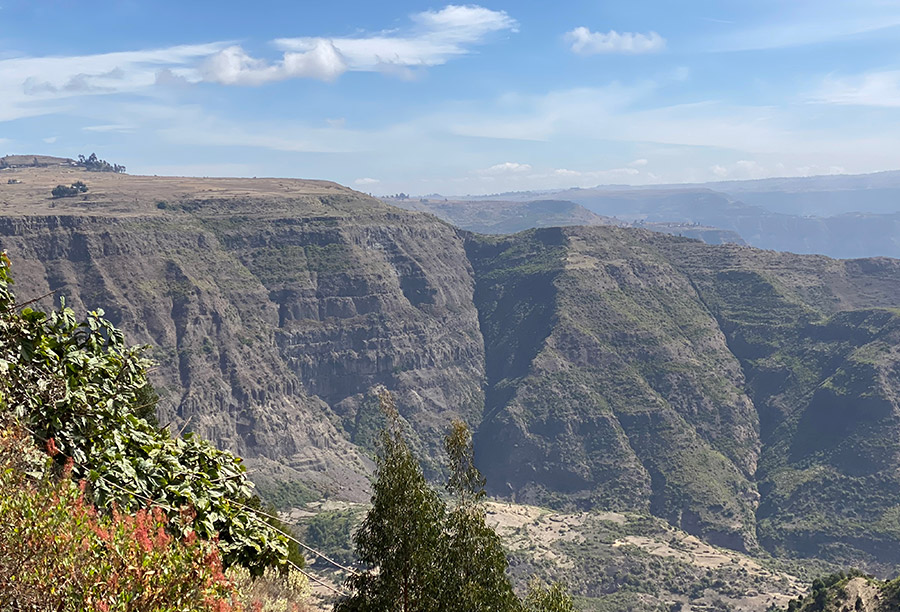As one of the integrated research programs of the National Museum of Nature and Science from FY2016 to FY2020, our group has conducted a research program entitled "Chemical Stratigraphy and Dating as a Clue for Understanding the History of the Earth and Life".
The main strategy of this program was the determination of stratigraphy and age of geological strata based on the chemical compositions and isotope ratios of rocks and sediments, making use of three mass spectrometer machines recently acquired by this museum. The results are useful for establishing precise ages for appearances and extinctions of species in the fossil record. The results are also utilized for comparisons between geological strata of different areas, facilitating the examination of temporal and spatial variation of fossils.
The planned exhibition will present comprehensive results from the integrated research program. The three mass spectrometers will be introduced and research results of six sub-projects covering different geological ages will be described.
Precautions for Visitors
Please book in advance Online advanced booking is required for all visitors to enter the museum (Ueno district).
Exhibition
| Title | Special Exhibition "The History of Life and the Earth it inhabits, revealed by Chemical Stratigraphy and Dating" |
|---|---|
| Period | September 27, 2022 (Tue) – December 4 (Sun) |
| Venue | Global Gallery 1F Open Space |
| Hours | 9:00-17:00 *Opening days, hours etc. are subject to alteration. Please check the website before your visit. |
| Closed | Monday (Except October 3 and October 10), October 11 |
| Organizers | National Museum of Nature and Science |
| Cooperation | The Kyushu University Museum, University of Tsukuba, Mikasa City Museum, Hobetsu Museum |
アクセス
| National Museum of Nature and Science | |
|---|---|
| Address | 7-20 Ueno Park, Taito-ku, Tokyo 110-8718 |
What to see
1 What is a mass spectrometer?
We will guide you through the characteristics of Thermal Ionization Mass Spectrometry (TIMS), which can analyze strontium (Sr) and neodymium (Nd) isotope ratios, Inductively Coupled Plasma Mass Spectrometry (ICP-MS), which can measure the lead (Pb) isotope ratio, and Isotope Ratio Mass Spectrometry (IRMS), which reveals carbon (C) and oxygen (O) isotope ratios.

Thermal Ionization Mass Spectrometry (TIMS)
2 Taking on the strata of the dinosaur extinction
We have studied the Cretaceous-Paleogene (K-Pg) boundary, known as an indicator of the dinosaur extinction in the United States, and as evidence of the fall of the gigantic meteorite that is believed to have caused the extinction. We will also examine the volcanic eruption in the Deccan Plateau that is considered to be another cause.

Strata including the Cretaceous–Paleogene (K–Pg) boundary from North Dakota, US
3 Mesozoic ocean strata and fossils
We have dated zircon contained in a tuff (a light rock formed from volcanic ash), allowing us to determine the dates that various ammonites from the Late Cretaceous period appeared in Japan. We explain changes in the time-space distribution of ammonites that has recently been revealed.

Ammonite fossil (Didymoceras)
4 Post-Mesozoic strata and the fossils of mammals
The period in which Baleen Whales were extant in Okinawa was determined from analysis of strontium isotopes in the teeth of fossilized elasmobranchs. The discovery of extinct animals such as Paleoparadoxia and Pycnodontiformes will also be introduced.

Fossilized Late Miocene balaenopterid cranial bones (top: dorsal side, bottom: ventral side) and great white shark teeth (middle)
5 The origin and development of the East Asian Monsoon
We analyzed Japanese strata from the Paleogene to the Neogene periods, revealing some facts about the origin and development of the monsoon through data from a combination of fossilized plants and diatoms.

Analysis results of plant fossils
6 Ocean currents and environmental transitions in the Quaternary period
Based on a recent paleoceanographic study focusing on sediment from the Quaternary period and microfossils contained in it, such as foraminifers, short-term environmental changes have been revealed. We introduce them, together with the flow channel of the Kuroshio Current, and the behavior of the Kuroshio Front, where the Kuroshio and cold currents meet.

Seashell fossil (Acmaea pallida)
7 Environmental changes in the Anthropocene, and the local extinction of mammals
In order to learn about the extinction of carnivorous bats that fed on insects, of which there were no records in the local history of Minami Daito Island or in natural history, we conducted a study of the bones of small bats and accumulated mud scattered in the form of droppings found in caves. The results are shown here.

Miniopterus sp. extirpated from an island in Okinawa

